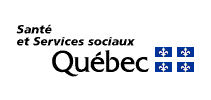Urinary Incontinence
What is it?
Urinary incontinence is any involuntary loss of urine.

What's the role of pelvic floor muscles?
- The pelvic floor muscles are located between our legs, from the pubic bone at the front to the tailbone at the back, like a hammock.
- They help to keep the bladder, uterus and bowel in the correct place
- The pelvic floor muscles can become weak or tight for many different reasons, and this can lead to leakage.
3 Types of incontinence
1. URGE
The bladder suddenly contracts—creating the urge to urinate—which may lead to sudden leaks or the urge to pee when you hear water running such as the shower or when wash the dishes, or as you’re getting close to the toilet
2. STRESS
When there is leakage with increased pressure on the pelvic floor muscles, such as when you cough, sneeze, jump, lift something heavy or even laugh hard
3. MIXED
A combination of these two
Everybody is different
For some, it’s just a few drops, for others it can be a big leak.
What causes this?
Age
- As we get older, our muscles can become more lax and weaker, this can make it harder for the pelvic floor muscles to support the pelvic floor organs, such as the bladder
Hormonal changes
- During menopause, the tissues can lose elasticity and become weaker
Childbirth
- During pregnancy, the pelvic floor muscles stretch a lot to accommodate for the growing belly. This can make the muscles weaker, and they can’t do their job as efficiently
Increased weight
- This can put extra pressure on the muscles
Certain medical condition
- Lung disease and smoking (leading to increased coughing)
How common is this?
It is very common.
- One in three women experience stress incontinence.
- For men, that number is a bit less at around one in four
It can be difficult to talk about it and there is unfortunately still some taboo around talking about it. But know that you are not alone. And there is help available!
What can I do?
The good news is that, with some simple exercises, you can strengthen your pelvic floor muscles and keep them strong and healthy.
Your doctor, midwife or nurse can also refer you to a pelvic health physiotherapist.
How can a pelvic health physiotherapist help?
-
Pelvic health physiotherapists specialize in pelvic floor rehabilitation.
-
They can help you manage symptoms related to urinary incontinence and provide personalized pelvic floor exercises to help you get back to your regular activities and enjoy life to the fullest.

Many people are told to do Kegel exercises to help them with urinary leakage or after giving birth.
Other things I can do
-
Talk to a professional or a friend/family member about it! By talking about it, we break down the taboos. Remember, this is a really common condition
-
Keep a healthy weight
-
Drink sufficient amount of water and follow a varied diet with high fiber foods—whole grains, oatmeal, chickpeas, lentils, fruit and vegetables. This helps to prevent constipation
-
When we are constipated, we put extra strain on our pelvic floor muscles as we try to push. Over time, this can make the muscles weaker
-
If you have any questions or need some advice, ask your doctor or nurse to be seen by a physiotherapist who has advanced training in pelvic health problems. There might be one in your community.
Or you can contact the pelvic health team directly.


